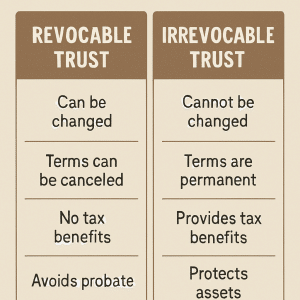Top 10 Best Variable Annuity Companies
Variable Annuities have decreased in popularity in recent years. This is partially due to increased volatility in the markets but mainly because the cost of variable annuities and their optional income riders have increased drastically over the last 10 years.
In this article, we will list the best variable annuity companies based on total sales through the 3rd quarter.
So without further ado let’s get started.
Best Variable Annuity Companies 2020
- Jackson National Life
- Equitable Financial
- Lincoln Financial Group
- TIAA
- AIG Companies
- Brighthouse Financial
- Prudential Annuities
- Allianz Life of North America
- Nationwide
- New York Life
Best Variable Annuity Companies 2020 by the Numbers
The Secure Retirement Institute® (SRI®) releases annual and quarterly Annuity Sales results in each year and recently published variable annuity sales results for the first 9 months of 2020.
Total annuity sales were $54.8 billion in the third quarter, up 13% from the second quarter of 2020 but 8% lower than prior year results, according to preliminary results from the Secure Retirement Institute® (SRI®) U.S. Individual Annuity Sales Survey.
Variable sales were $70.7 billion in the first nine months of 2020, down 6% from the first three quarters of 2019. SRI is forecasting VA sales to remain steady in the fourth quarter and to reach $89-$94 billion by the end of 2020.
An interesting note worth mentioning is the top 20 variable annuity companies have accounted for 95% of total variable annuity sales through Q3 2020.
You May Also Enjoy:
2020 Variable Annuity Sales
The table below lists the best variable annuity companies based on sales through the 3rd quarter of 2020. Jackson National is the best variable annuity company thus far with $11.68 billion in sales.
| Rank | Variable Annuity Company | VA Sales |
|---|---|---|
| 1 | Jackson National Life | $11,686,260 |
| 2 | Equitable Financial | $7,611,205 |
| 3 | Lincoln Financial Group | $7,540,623 |
| 4 | TIAA | $6,626,000 |
| 5 | American General Life Insurance Company | $4,334,963 |
| 6 | Brighthouse Financial | $4,239,495 |
| 7 | Prudential Annuities | $3,936,450 |
| 8 | Allianz Life of North America | $3,034,231 |
| 9 | Nationwide | $2,879,700 |
| 10 | New York Life | $2,847,009 |
($ in thousands)
Source: Secure Retirement Institutre* U.S. Individual Annuities Sales Survey
Best Variable Annuity Companies
#1. Jackson National Life
| Jackson National Life Insurance Company | Rating |
|---|---|
| 1 Corporate Way, Lansing, MI 48951 | |
| A.M. Best Rating (15 possible ratings) | A (3) |
| Moody's (21 possible ratings) | A1 (5) |
| Fitch (21 possible ratings) | A+ (5) |
| Standard & Poor's (Financial Strength, 20 Ratings) | A+ (5) |
| Comdex (percentile of all rating companies) | 84 |
#2. Equitable Financial
| Equitable Financial | Rating |
|---|---|
| 1290 Avenue of the Americas, New York, NY 10104 | |
| A.M. Best Rating (15 possible ratings) | A (3) |
| Fitch (21 possible ratings) | A- (7) |
| Moody's | A2 |
#3. Lincoln Financial Group
| Lincoln Financial Group | Rating |
|---|---|
| 1300 South Clinton St., Fort Wayne, IN 46802 | |
| A.M. Best Rating (15 possible ratings) | A+ (2) |
| Moody's (21 possible ratings) | A1 (5) |
| Fitch (21 possible ratings) | A+ (5) |
| Standard & Poor's (Financial Strength, 20 Ratings) | AA- (4) |
| Comdex (percentile of all rating companies) | 90 |
#4. TIAA
| TIAA | Rating |
|---|---|
| A.M. Best Rating (15 possible) | A++ (1) |
| Fitch (21 possible) | AAA (1) |
| Standard & Poor's (20 possible) | AA+ (2) |
| Moody's (21 possible) | Aa1 (2) |
#5. AIG Companies
| American General Life Insurance Company | Rating |
|---|---|
| A.M. Best Company (Best's Ratings, 15 Ratings) | A (3) |
| Moody's (Financial Strength, 21 Ratings) | A2 (6) |
| Standard & Poor's (Financial Strength, 20 Ratings) | A+ (5) |
| Fitch Ratings (Financial Strength, 21 Ratings) | A+ (5) |
| Weiss (Safety Rating, 16 Ratings) | B (5) |
| Comdex Ranking (Percentile in Rated Companies) | 82 |
#6. Brighthouse Financial
| Brighthouse Financial | Rating |
|---|---|
| 11225 N Community House Rd, Charlotte, NC 28277 | |
| A.M. Best Rating (15 possible) | A (3) |
| Fitch (21 possible) | A (6) |
| Standard & Poor's (20 possible) | A+ (5) |
| Moody's (21 possible) | A3 (7) |
#7. Prudential Annuities
| Prudential Annuities | Ratings |
|---|---|
| A.M. Best Rating (15 possible) | A+ (2) |
| Fitch (21 possible) | AA- (4) |
| Standard & Poor's (20 possible) | AA- (4) |
| Moody's (21 possible) | Aa3 (4) |
#8. Allianz Life of North America
| Allianz Life | Rating |
|---|---|
| 5701 Golden Hills Dr., Minneapolis, MN 55416 | |
| A.M. Best Rating | A+ |
| Moody's (21 rankings) | A1 (5) |
| Comdex (percentile of all rated companies) | 94 |
| Standard & Poor's (20 Possible Ratings) | AA (3) |
#9. Nationwide
| Nationwide Life & Annuity Company | Rating |
|---|---|
| One Nationwide Plaza, Columbus, OH 43215 | |
| A.M. Best Rating (15 possible ratings) | A+ (2) |
| Moody's (21 possible ratings) | A1 (5) |
| Standard & Poor's (Financial Strength, 20 Ratings) | A+ (5) |
| Comdex (percentile of all rating companies) | 90 |
#10. New York Life
| New York Life | Rating |
|---|---|
| A.M. Best Rating (15 possible) | A++ (1) |
| Fitch (21 possible) | AAA (1) |
| Standard & Poor's (20 possible) | AA+ (1) |
| Moody's (21 possible) | Aaa (1) |
| Comdex | 100 |
What is a Variable Annuity?
A variable annuity is a type of annuity contract, the value of which can vary based on the performance of an underlying portfolio of mutual funds. Variable annuities differ from fixed annuities, which provide a specific and guaranteed return.
Understanding Variable Annuities
There are two elements that contribute to the value of a variable annuity:
- the principal, which is the amount of money you pay into the annuity, and
- the returns that your annuity’s underlying investments deliver on that principle over the course of time.
The most popular type of variable annuity is a deferred annuity. Often used for retirement planning purposes, it is meant to provide a regular (monthly, quarterly, annual) income stream, starting at some point in the future.
There are also variable immediate annuities, which begin paying income right away. Before buying a variable annuity, investors should carefully read the prospectus to try to understand the expenses, risks, and formulas for calculating investment gains or losses.
A Closer Look at Variable Annuities
In “The Future View of U.S. Annuity Sales” research paper, The Secure Retirement Institute projects variable annuity (VA) sales to decline in 2020, but then have rebounding growth in 2021 and 2022.
The report is predicting the COVID-19 pandemic will have a significant impact on the VA market in 2020. Extreme volatility will have investors seeking safety and will keep many away from purchasing equity-based products, particularly products with limited insurance guarantees. Low-interest rates will impact guaranteed living benefit offerings.
Expectations are for sales of investment-focused VAs and products with guaranteed living benefits to decline by as much as 15 percent or more, similar to the 18 percent decline the VA market experienced in 2009.
The registered index-linked annuity (RILA) market has not experienced a period of extreme market stress, as the first product to hit the market happened in 2010. In this year’s forecast, RILAs has been segmented, since sales expectations are much different than those of the other VA product types.
Registered index-linked annuity products will have appeal in times of equity market volatility as they can provide a combination of downside protection and growth potential. RILA sales are expected to grow to nearly $20 billion in
2020 as investors look for the balance of protection, safety, and growth potential.
The report suggests in 2021, variable annuity sales will rebound as the economy gets back on track. Modest growth is expected for investment-focused variable annuities and VAs with guaranteed living benefits, with stronger growth expected with RILA products. In 2021, RILAs could represent nearly a quarter of all variable annuity sales.
Finally, the report believes that in 2022, equity markets are expected to be back at the pre-pandemic levels. This will help continue to spur variable annuity sales growth, bringing sales to levels not seen since 2016.
RILAs will continue to see a faster growth rate than traditional variable annuity products as more carriers will be offering these products, combined with investors who will likely still be looking for a balance of protection and growth.















